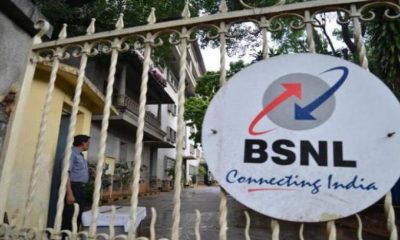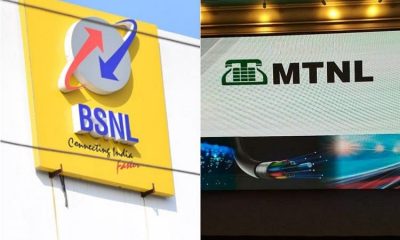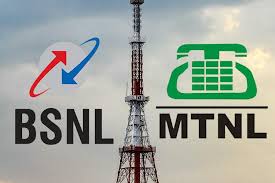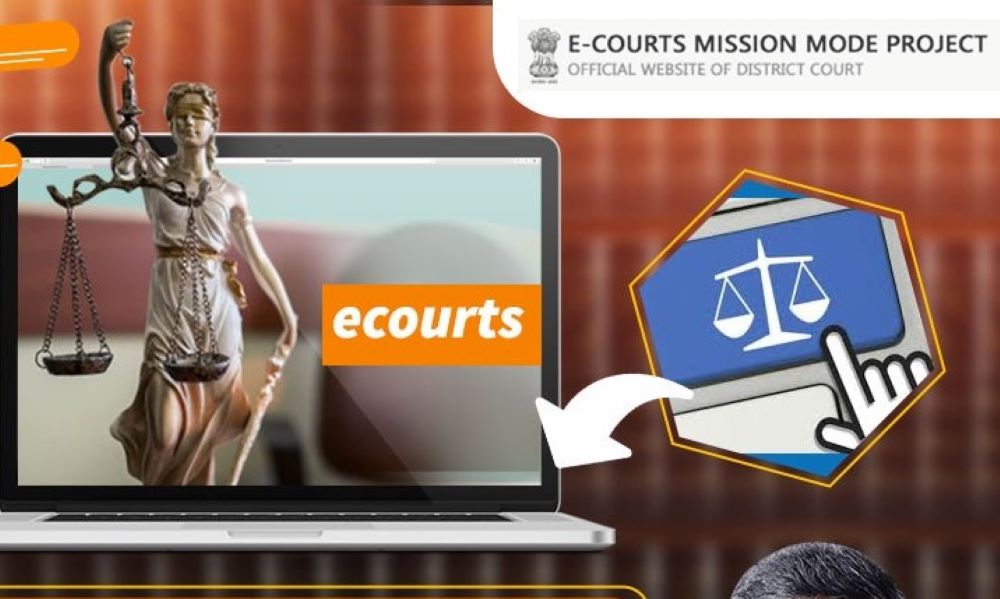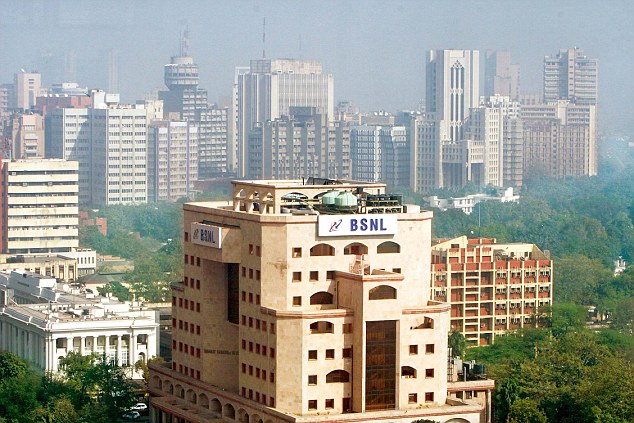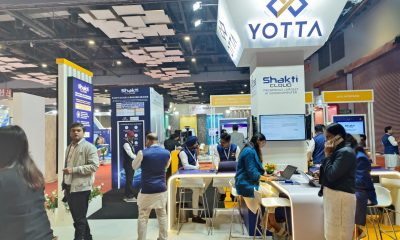Broadband
Connecting the unconnect, the biggest challenge for WiFi
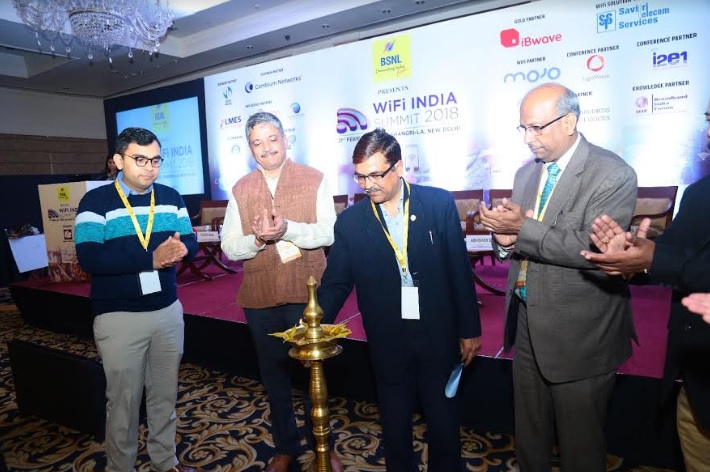
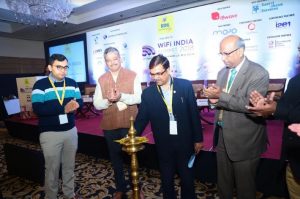 NEW DELHI: WiFi is being touted as backbone of digital infrastructure across many countries but so far it has seen a lacklustre growth in India.
NEW DELHI: WiFi is being touted as backbone of digital infrastructure across many countries but so far it has seen a lacklustre growth in India.
Globally there is one WiFi hotspot for every 150 people. As per a Towers and Infrastructure Providers’ Association (TAIPA) report there are 31,518 WiFi hotspots as of 31st March 2016 and this figure includes the deployments in Hotels and Cafes. In contrast, countries like France, US and the UK had 1.3 crore, 98 lakh, and 56 lakh hotspots, respectively.
It is projected that Mobile Data Traffic will reach 1.7 Exabytes by 2020 (12 fold increase from 2015) and WiFi shall carry a major share of this traffic generated in Public Hotpots and Mobile Data offload. In order to give the much deserved push to WiFi deployment in India, the government has announced that it will facilitate the setting up of as many as 7.5 lakh public-internet hotpots by the end of 2018.
Bharat Exhibitions organised WiFi India Summit 2018 to discuss and deliberate on the challenges faced by various stakeholders and how to connect the unconnect. The objective of forum was to look at the current state of Public WiFi growth and assess what are the roadblocks in its growth plan. The Summit saw participation from various key industry such as Mobile operators, WiFi network operators, Internet Service Providers (ISPs), Hospitals, Venue/Business owners/ Exhibition Centre, Hotels / Shopping Mall, Airport Infrastructure Companies, Real Estate Companies, Govt. & Municipality, Education Institutes/University, Restaurant & Coffee Shop owners, Regulators & Govt. bodies, Device manufacturers, Access network infrastructure manufacturers, Aggregators and roaming organizations, Systems and software suppliers.
Delivering the key note address, Sunil K. Gupta, Secretary, Telecom Regulatory Authority of India (TRAI), pointed out that WiFi is preferred over mobile network due to the quality of service. He also mentioned that apart from traditional network, we can have Internet through cable TV network, or through satellite networks and through WiFi. Reflecting on the state of connectivity he said, “While the tele-density has reached almost 100%, the unique users are still around 40%. Even in the case of data, we are talking about 500 million users on the mobile network but the unique users are much lesser than that.”
Gupta talking about the challenges said people using public WiFi should not be required to login again and again every time they wish to use the network. He went on to state that, “We have solved this very big problem by developing a Ubiquitous open software where all his data and KYC is captured and there after he just have to click to start the service. The framework has been developed and is being evaluated.”
Furthermore talking about the connectivity challenge, Gupta talked about using the cable TV network in the near future to connect users in the interiors of the country.
Talking about the joinery of evolution Anil Kumar Jain, Chief General Manager, BSNL said, “That in 2005-06 the era of data started and in 2017 the consumption of BSNL data by its consumers grew six folds and he believed that all operators may have witnessed a similar spurt.”
Shedding light on the state of WiFi in India, Shri Anil Jain said, “There are 8.23 million landline broadband connections in India and is witnessing a downward trend. Fibre-to-home users are 1.25 million. It is being said Asia will lead the WiFi growth and the countries that will contribute to this growth are India, China and Japan”. He added, “Globally WiFi has been growing at a fast pace since 2008. The challenges being faced in the rural areas range from getting a electric connection to securing a space and even getting necessary clearances.”
Ashutosh Vasant, Chairman & Managing Director (Addl. Charge) & Director (POM), RailTel talked about being the only profitable telecom company under the Government of India. He said, “WiFi the world over does not make any money, it is the value addition that helps you earn. If you sit at Starbucks and you get good quality WiFi you are ready to pay Rs. 350 for a coffee. So the need is to think beyond, create avenues to create sustainability.”
Commenting on the challenges faced in the rural area in setting up WiFi hotspots, Mr. Abhishek Singh, Chief Operating Officer, CSC Wi-Fi Choupal Services India (P) Ltd. said, “We are setting up in places where Internet has not reached. The main challenge we face is in educating the people on how to use as they tend to compare WiFi hotspots to mobile internet.”
Rajesh Kaul, Founder & Director, LMES iConnectWe said, “Our vision is to be the enabler for driving the penetration of digital connectivity across the unconnected domain. The major challenges according to us are the bandwidth cost and creating an ecosystem in which there is partnership with operators and the government.”
As per Vikram Deshpande, VP & Head, Wi-Fi Business & Alliances, Bharti Airtel the biggest deterrent in having ubiquitous hotspots is the cost factor, “There is a cost of laying of the backhaul, second is the equipment and third will be ROW costs.”
Shailendra K. Singh, Co-Founder & CEO, Shaildhar Telecom talking about his experience in the deployment and growth challenges said, “For us Terrain is a big challenge and bandwidth can be a huge cost.”
Congratulating the Railways for what they managed to achieve in a short span of time, Mr. Gulzar Azad, Country Head – Connectivity, Google India said, “In the morning hours, depending upon the device capability you can get speed up to 35 MBPS or 50 MBPS and what it was telling that Internet is much beyond what they have experienced till now. This is what I would like to call the experience divide and it is not going away but growing at a unrecognised pace. More interestingly, while the second phase is still on, there is third phase is coming up, which is a knowledge divide. Even after your have conquered the Digital Divide, and make WiFi accessible to people, they may not know what to do with and thus creating a knowledge divide. Assisted form of Internet will become extremely important in that scenario. I see RailTel and BSNL investing in it and TRAI thinking about it and that is very encouraging.”
Providing a different take to the discussion, Mr. Deeptesh Chandra, Director, NetVision said, “Fibre is not a reliable service and hence we are here to talk about WiFi. Unless we face a lot of interference, WiFi is reliable and it works.”
The other challenges that were touched upon during the summit were network management and the current quality of mobile service.
This event is partnered by BSNL, RailTel, Cambium Networks, iBwave, Savitri Telecom Services, Mojo Networks, LMES ConnectWe, NetVision, Shaildhar Telecom, LigoWave, i2e1 and TATA DoCoMo. Knowledge Partner for the event was Broadband India Forum and supported by Cellular Operators Association of India (COAI).
Broadband
Broadband will not only provide facilities but will also create a big pool of skilled youth in Indian villages
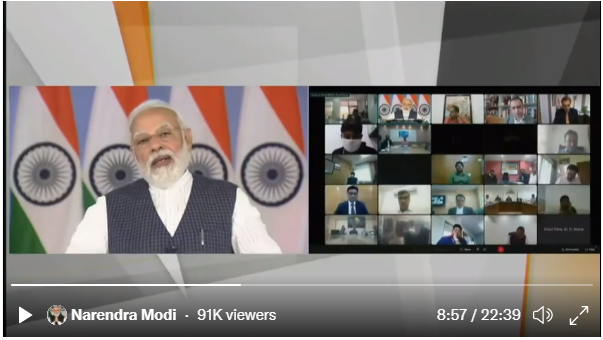
NEW DELHI: Rural digital connectivity is no longer mere aspiration but has become a necessity, said Prime Minister Shri Narendra Modi while addressing a post-budget webinar on the recently announced Union Budget 2022.
The theme of the webinar ‘Leaving No Citizen Behind’ was aimed at bringing industry leaders, policymakers and government officials together to deliberate upon the positive impact of the budget and identify sector specific actionable strategies to collectively work towards furthering the common goal of upliftment of everyone with saturation of each household and village, leaving no one behind.
Speaking at the webinar, Prime Minister said that Broadband will not only provide facilities in the villages but will also create a big pool of skilled youth in the village economy. He further emphasized that Broadband, will enable expanding the service sector to rural areas and help in boosting the economy. He stressed the need for a saturation approach to provision of basic infrastructure, especially in aspirational districts. He also emphasized the need for spreading awareness about the use of such connectivity and healthy competition between villages in achieving targets.
The Union Budget 2022-23 has provided an impetus to the telecom sector through a budget announcement which proposes to allocate 5% of annual collections under the USOF to promote R&D and commercialisation of technologies and solutions in order to enable affordable broadband and mobile services proliferation in rural and remote areas. In addition it has also been proposed to cover all villages on optical fiber network by 2025.
In order to carry forward and sustain the momentum of budget and to create a sense of ownership in budget implementation by all relevant stakeholders, a series of webinars were organised through various Ministries and Departments. One such post-budget webinar was organised by Department of Rural Development on the theme “Leaving No Citizen Behind”. One of the break-away session was on “Road & Info way to all rural habitations”. This session was moderated by K. Rajaraman, Secretary(T), Department of Telecommunications, and was co-moderated by Dr. Ashish Kumar Goel, Addl. Secretary, Ministry of Rural Development.
In this session various eminent speakers such as P.K. Purwar, CMD, BSNL, Gopal Vittal, CEO, Bharti Airtel, Manoj Kumar Singh, ACS, Rural Development, Uttar Pradesh, Prof. A. Veeraraghavan, Department of Civil Engineering, IIT Madras, and V. Sriniwas, CEO, Vishwa Samudra Engineering, Hyderabad talked about various aspects of broadband connectivity and development in rural roads sector.
It was felt that digital saturation is the foundation for the achieving all facets of development including financial, social or economic development especially in rural and remote areas.
For achieving 100% saturation, it was indicated that convergence of all stakeholders is required to provide cost and technology efficient services which is also part of GatiShakti program of the Government of India. BharatNet shall be leveraged for the same and utilised for early saturation of all rural and remote areas including ensuring uptime and SLA as per norms for better demand.
A need was felt that Outcome Focus shall be the main objective in all government programs and schemes. Innovation conferences may be one of the activities to ensure new development of technologies apart from focussed development of rural specific content.
Based on discussion and inputs of stakeholders, RoW issues were identified as key challenges and efforts need to be made to mobilise the State government departments including creation of National Portal for early resolution through Single window clearance.
Industry experts also indicated the need for focus on supply side and demand side constraints including power requirement of telecom, focus on green telecom and reduction in tax and fees structure and regulatory fees for the services etc. The implementation strategy of the Department for rollout of broadband in rural areas will include this valuable feedback and inputs from various stakeholders.
Broadband
Tremendous potential for proliferation of Wi-Fi hotspots in India: TRAI

NEW DELHI: Tremendous opportunity exists for the rapid proliferation of public Wi-Fi hotspots in India, and the PM WANI initiative can result in a massive scale-up of the internet in rural areas, which will be transformative, Trai Chairman said on Friday.
India needs all kinds of technology to serve its digital ambitions, and the technology-neutral stance will serve as a prime catalyst for the required growth, P D Vaghela, Chairman of Telecom Regulatory Authority of India (Trai), said.
“There is a tremendous opportunity in India for the proliferation of public Wi-Fi hotspots. PM WANI (PM Wi-Fi Access Network Interface) can result in rapid scale-up of the internet in rural areas, which will be transformative given the low level of penetration (there) compared to urban areas,” he said while speaking at a virtual event organised by industry body Broadband India Forum (BIF).
India’s appetite for data appears to be insatiable, with the country now having over 750 million broadband connections.
“However, the potential for growth is still very high. I think, probably over 500 million more to be connected, especially in rural areas,” he pointed out.
Terming the internet as one of the most powerful socio-economic engines of growth, Vaghela said this is true not only for India but for the rest of the world.
“Wi-Fi 6 and 5G expand opportunities for digitisation across all industries…and enables organisations to be just everywhere, while increasing productivity and offering the best user experience,” he said.
The PM WANI initiative has been a historic step forward, he said, referring to the ambitious programme that aims to fuel broadband internet proliferation in the country through a mesh of public Wi-Fi networks and access points by local Kirana and neighbourhood shops.
“PM WANI system is a best low-cost alternative, which offers a way forward to connect low revenue consumers…,” he noted.
The BIF digital dialogues event also witnessed the release of an industry white paper titled Role and importance of next-generation Wi-Fi technologies in the acceleration of digital transformation’.
Some gaps need to be ironed out for the PM WANI scheme to pick up, the white paper said, flagging the need to create wider awareness about the scheme, its technical design, the utility of Public Wi-Fi services and associated benefits.
“A regulation prescribing ceiling rate with guaranteed QoS (quality of service) may be considered by Trai to ensure that ISPs/TSPs (internet and telecom service providers) do not exercise discriminatory practices in allocating bandwidth and pricing for PDOAs/PDOs,” BIF said summing up key suggestions contained in the white paper.
The government should facilitate easy bank loans or funding from USOF (Universal Service Obligation Fund) for small entrepreneurs to invest in the PDO/PDOA business, it said while calling for suitable modifications in the WANI framework to facilitate roaming.
“Spectrum in both 6 GHz and V band has been delicensed in several countries, to increase capacity and accelerate economic growth. Need to explore releasing these bands in India at the earliest to unlock their economic value through use in Wi-Fi services,” it added.
The government had earlier approved the setting up of public Wi-Fi networks and access points by local Kirana and neighbourhood shops through public data offices that will not involve any licence, fee or registration.
The public Wi-Fi Access Network initiative is aimed at bringing a massive Wi-Fi revolution in the country. The public Wi-Fi networks, under WANI, have an architecture involving multiple players — Public Data Office (PDO), Public Data Office Aggregators (PDOAs) and app providers.
Source: Press Trust of India
Broadband
Nokia modernizes Subisu’s optical network for high-speed broadband across Nepal
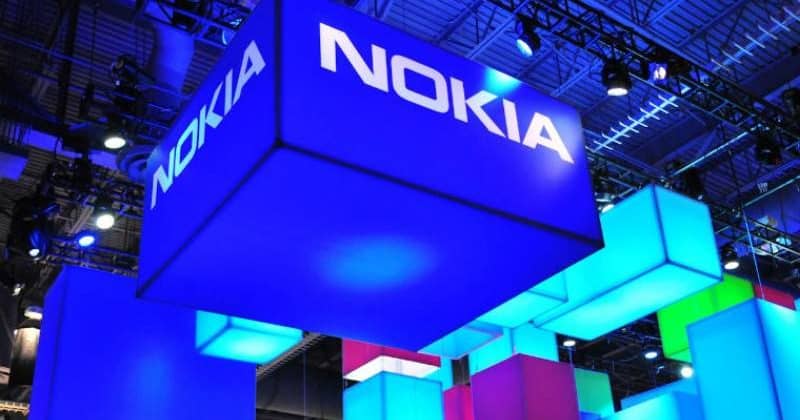
NEW DELHI: Nokia today announced that it had been selected by Subisu, a leading service provider in Nepal, to modernize the 1500 kilometers long backbone network spread across East and West Nepal.
In a first-of-its-kind initiative in Nepal, Nokia has deployed its 400G single fiber solution to provide ultra-high-speed broadband to Subisu’s retail and enterprise subscribers.
Nokia’s solution allows Subisu to address the growing bandwidth requirement and break into new market segments. Subisu’s customers will be able to use high-capacity applications and experience an overall improvement in the quality of services.
Nokia 1830 Photonic Service Switch (PSS) platform offering Photonic Service Engine (PSE) enabled 400G single fiber, bidirectional Dense Wavelength Division Multiplexing (DWDM) solution is now deployed across the country. This is the first operation of such a solution anywhere.
Nokia’s 400G single fiber solution significantly improves fiber capacity and helps Subisu enhance network resilience and reach while optimizing capex and reducing opex. The solution allows Subisu to easily scale the network to provide multi-terabits of capacity over a single fiber.
Binaya Saud, CEO, Subisu, said: “We have been working with Nokia for a long time now, and their industry-leading products and solutions are helping us provide best-in-class broadband services to our subscribers. Nokia was the sole vendor for this important project, and its solutions are enabling us to grow our subscriber base and provide a superior experience to our existing customers even as we future-proof our investments.”
Vinish Bawa, Head of Emerging Markets, India, Nokia, said: “Our field-proven 1830 PSS solution is enabling service providers, like Subisu, to meet the growing capacity demand even as they enhance customer experience. We are pleased with the successful and timely completion of this crucial project to modernize Subisu’s optical network, and we look forward to working with them in the future.”

